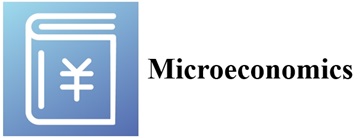Vol. 1 No. 1 (2025)
-
 Open Access
Open AccessArticles
Artificial intelligence agents and superstar effectsDiego Lanzi
Microeconomics, 1(1), 2005, 2025, DOI:
Abstract:
The paper models AI-services market competition in the presence of superstar effects. By modifying the original Rosen’s setup consistently with recent advancements of superstar theory, we discuss the role of scale-related technical change in the advent of superstar artificial intelligent agents and the main consequences of superstar effects on competition between AI-based systems. Furthermore, we outline how to extend the model for addressing three issues: (i) positive feedback loops from data accumulation; (ii) the co-evolution of artificial intelligence agents’ capabilities and market size; and, (iii) the “winner-takes-all” dynamics triggered by superstar effects.
-
 Open Access
Open AccessArticles
Determinants of bottled water consumption and demand analysis of related goods: The Italian market caseFrancesco Scalamonti
Microeconomics, 1(1), 2017, 2025, DOI:
Abstract:
This paper provides a comprehensive analysis of the Italian bottled water and non-alcoholic beverage industry by examining the market dynamic from 1980 to 2020 for the bottled water and demand patterns from 2011 to 2020 for the non-alcoholic beverages. With originality, this study integrated two quantitative approaches by implementing a dynamic equation in both the Weighted-OLS (WLS) models—which we control for fixed-effects models—and the Linear Approximate-Almost Ideal Demand System model (LA/AIDS). Our outcomes indicate that operative volumes in the bottled water industry are significantly influenced by their past value, temperature, population trends, and per-capita disposable income. The LA/AIDS model shows that both soft drinks and bottled water are price-elastic, while juices display price-inelasticity relative to both. The income elasticity of all three beverage categories suggests they are normal goods, but they are at the boundary of the classification between necessary and luxury goods. In addition, bottled water is the most widely consumed good, followed by soft drinks and juices. Finally, socio-economic implications of the bottled water industry and broader non-alcoholic beverage industry have been highlighted, ultimately emphasizing the need for policy interventions at various levels, for instance regarding the environmental and economic impacts from the bottled water and non-alcoholic beverage industries and the promotion of healthier consumption habits.



 Submit a Paper
Submit a Paper